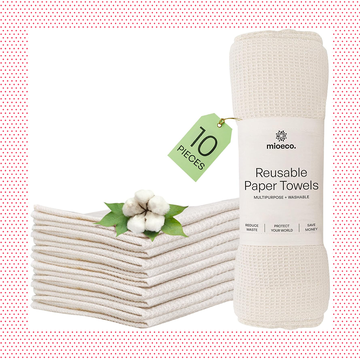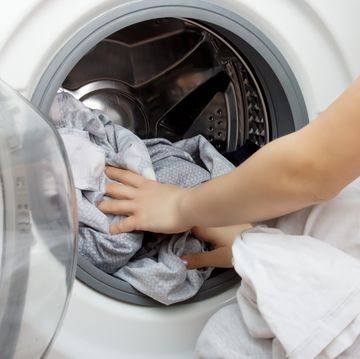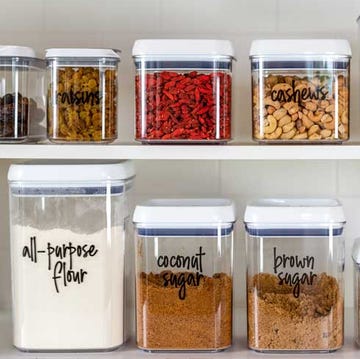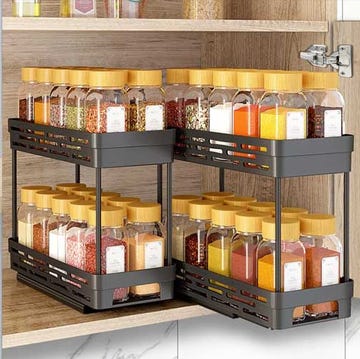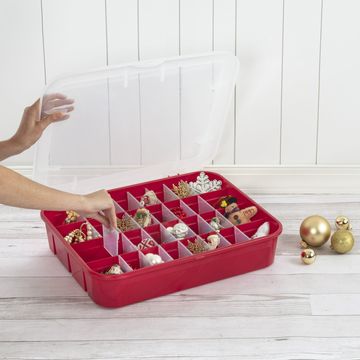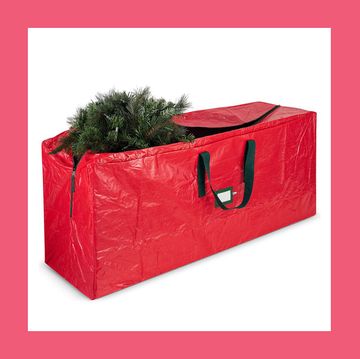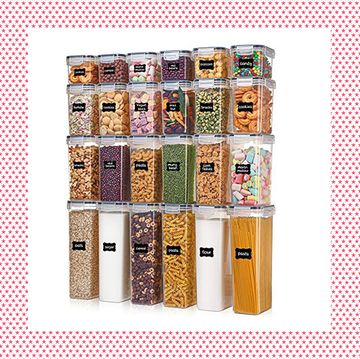Psssst! You may be doing it wrong. Yes, you, with the dishwasher. I know. You're diligently prerinsing before loading in your own trademark style that no other human in your household can quite do correctly. Except…well, read on. We talked to two engineers who have spent decades testing dishwashers to tell you the errors of your ways.
What kind of dishwasher should I get?
First things first: Don't buy more than you need. Dishwasher design has been revolutionized in the past decade and prices have plummeted. Here's what else you need to know:
You don't need to spend a fortune. Cost-saving secret: The cleaning performance of very expensive machines equals the cleaning performance of cheaper, name-brand dishwashers. Why? Because the cleaning systems are essentially the same. On fancier models, you're paying for three things: appealing exterior design, extras such as adjustable loading racks and precision sensors that choose the cycle for you, and silence—pricier models are much quieter. If clean dishes are all you need and you don't mind some noise, midsize models from companies like GE start well under $300.
Consider ways to spend even less.Shop toward the end of the year, when stores are making space for next year's models. If you don't mind a few cosmetic scuffs, ask whether any floor models are available, and confirm that they come with full warranties. Or go used: Dishwashers that are merely a year or two old are frequently traded in during kitchen renovations. Your local used appliance store probably stocks models for under $200 that originally sold for double or triple that amount. Simply look for a model you like and confirm that there's a 100-day parts and labor warranty.
What about Energy Star models? Energy Star models often retail for $50 to $100 more but use substantially less energy over time and can save you money on your utility bills. As part of the Energy Star program, the government has been offering rebates to offset the cost of Energy Star appliances. Some state rebate programs are now closed, but others still offer substantial tax rebates. To find out if your state is still offering rebates, go to EnergySavers.gov/Financial.
Are dishwashers more efficient than hand-washing?
Short answer: Yes. But this wasn't always the case. "Dishwashers used to clean by using a ton of water and energy," says John Dries, a Kentucky engineer who designs dishwashers for major manufacturers. "In the '90s, 13 gallons was typical. Now there are machines that can do a very good job on 4 gallons."
Models with an Energy Star sticker use a maximum of 5.8 gallons per cycle, and half the electricity of older models (by comparison, running your faucet for just one minute uses roughly 1 gallon of water, plus the electricity to heat it). So unless you're the type to painstakingly wash 30-plus pieces of tableware with one tub of soapy water and one tub of clean water, your dishwasher is more efficient.
A Word About Prerinsing
Don't do it. Yes, you read that correctly—prerinsing is wrong. "Dishes should be scraped to remove large chunks," says Dries. "But if you're rinsing, you're really just wasting water and electricity."
So why is everyone in the habit of prerinsing? Because older dishwashers removed food soil by diluting the food in water, and then hoping it went down the drain. Which it often didn't.
The vast majority of today's models have filtration systems designed to catch food and pump it down the drain so that very little dirty water carries over to the next cycle. Higher-end models not only have self-cleaning filters, but hard food disposers as well, which grind food and send it down the drain.
In addition, modern detergents are designed to attack food, which can actually cause problems if there isn't any food on the dishware. "The detergent in the unit aggressively goes after something, and if you don't have food soil in the unit, it attacks the glasses, which will get cloudy," says Mike Edwards, a dishwasher designer and senior engineer for Bosch. So ignore your friends when they tell you that you have to prerinse.
How to Load the Right Way
Mike Edwards knows a thing or two about how to load a dishwasher—he's been designing them for 22 years. His suggestion: "Read the manual. We put a lot of effort into it!" Each tub is a little different, but even so, there are two golden rules: Like items shall be loaded with like. (More items fit that way.) And all items should face the middle of the unit—that's where the jet spray comes from.
• Avoid nesting Water, water vapor and heat need to touch every surface of the items being washed, so leave space between dishes and don't overfill.
• Place Items facing Down Placing bowls, pans and cups upright means they'll fill with dirty water and won't be able to drain.
• The Lower Rack Put bigger dishes here, close to the jet spray. Plates, pots, pans, mixing bowls all go here; platters go against an outside edge so they don't block other items. Durable mugs and thick glasses can also go on this rack.
• Silverware Load the silverware basket in the sink—knives handle-up, and forks and spoons handle-down—making sure not to overfill. Many baskets are designed to sit in a variety of bottom rack locations; after you load other items, place the basket where your remaining empty space is.
• The Top Rack Place glasses and cups along the edges, next to the tines (not on them; if you put them on the tines, the tines can break and you'll fit fewer items). Load smaller plates and saucers in neat rows facing the middle. Long spatulas, cooking spoons and knives lie flat, in the long basket for this purpose, if your unit has one.
Dishware You Shouldn't Load, as Per the Manual
• Pricey or delicate glass "In many cases, expensive stuff won't hold up," says Edwards.
• Cast iron The iron can rust, and the seasoning will be removed. Gold -plated or -rimmed flatware and dishes The gold can scratch off, or the items may come out a color other than gold.
• Tin, pewter , sterling silver , anodized aluminum Like cast iron, these materials can rust. When in doubt, skip all metal products other than stainless steel and aluminum.
• Disposable plastics Skip anything that's not marked "dishwasher safe," particularly takeout containers.
• Wood Wooden bowls, spoons and utensil handles can warp, crack or discolor.
• Nonstick pans and baking sheets Read the labels that came with them, and if you're not sure, hand-wash so the nonstick coating doesn't come off.
•Children's dishes with designs Otherwise, Winnie might lose his face. And his honey.
• Expensive dishes Why risk it? Hand-wash anything you plan to leave to your relatives.
• Twisty straws It's just not going to end well.
| You've Got | A typical stack of post-meal dishes | Dinner dishes from a couple of days ago, plus some pots and pans | Baked-on dishes, lots of food soilage | Barely dirty dishes | Greasy, oily dishes |
|---|---|---|---|---|---|
| Setting | Light Wash | Normal | Heavy Wash | Quick Wash | High-Temp Wash |
| Why | This is what your manual refers to as "light food soil"— and it'll usually clean just fine on the "light wash" cycle. Test it for a few nights, and see how your dishes come out. | Designers know that reviewers will test the "normal" cycle, so they build it to be rather powerful, capable of handling fairly severe soilage. | This super-long cycle exposes dishes to moist heat for hours, giving food plenty of time to swell and fall off. | This cycle is just like the light wash, but with less time for dishes to soak. | The same as a normal cycle, with a final rinse of 160°F water to decimate any remaining grease and speed up drying. |
| How Long's The Cycle? | 80 minutes, 3 tub fills | 1 1/2–2 hours, 4 fills | 2 hours, 5 fills | 40 minutes, 3 fills | 1 1/2–2 hours, 4 fills |
A Word About Dishwasher Soap
When you use your dishwasher, hot water pours into the dishwasher tub, heating it to approximately 120°F to 140°F, and then shoots through spray jets to rinse off loose or stuck food. "Detergent is not released until the second or third fills, after the prerinses, when most of the heavy food soil is gone," says dishwasher engineer John Dries. Who knew? "But what remains is really tough, stuck-on food soil, and the detergent is key to helping get that off."
The engineers interviewed have run thousands of test loads, and they use regular old powder detergent (sometimes the simple stuff works best). But now that manufacturers are reformulating detergents to comply with phosphate bans, detergent performance is far less reliable. Dries suggests experimenting with different products until you find one that works. (Tablets are faring best at the moment.) And store boxes of powder detergent closed—exposure to air causes clumping.
6 Ways to Save Money
1. Use the lightest cycle possible. "The heavier the cycle, the more water and energy you use," says Edwards. Heavier cycles mean more tub fills and drains. Normal cycles typically fill four or five times, light washes around three.
2. Use less detergent. "How much you use should depend on how much food soil is in the machine, not on how many dishes," says Dries. Experiment to determine the smallest amount that works, and consult your manual, which tells you precisely how much to use. My dishes clean just fine with a teaspoon of powder detergent.
3. Don't run the hot water beforehand. "Some people run hot water in their sink for a minute before starting the dishwasher, assuming that the water going into the dishwasher will then be warmer," says Dries. But there's no need—modern dishwashers have their own water-heating element, to heat water well above the 120°F of most household faucets.
4. Skip heat drying. (Unless you need dry dishes immediately.) The dishes will dry on their own, especially if you're using a rinse aid. A trick of the trade: If you happen to be standing next to the dishwasher when it finishes, open the door. "Flash drying" will happen: The dishes are at their hottest point, and when suddenly exposed to cool air, they'll give up moisture at the fastest rate.
5. Rinse and hold. It's absolutely fine to run your dishwasher once a week. In the meantime, just run the rinse-and-hold cycle to prevent smells.
6. Always run it full. You knew that already, right?


